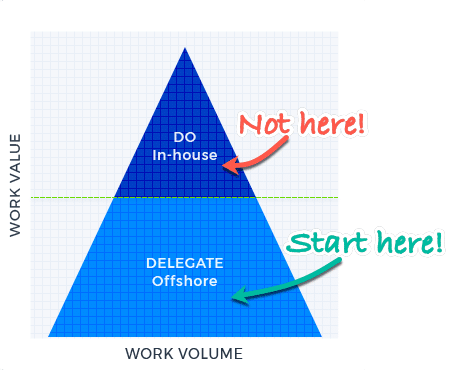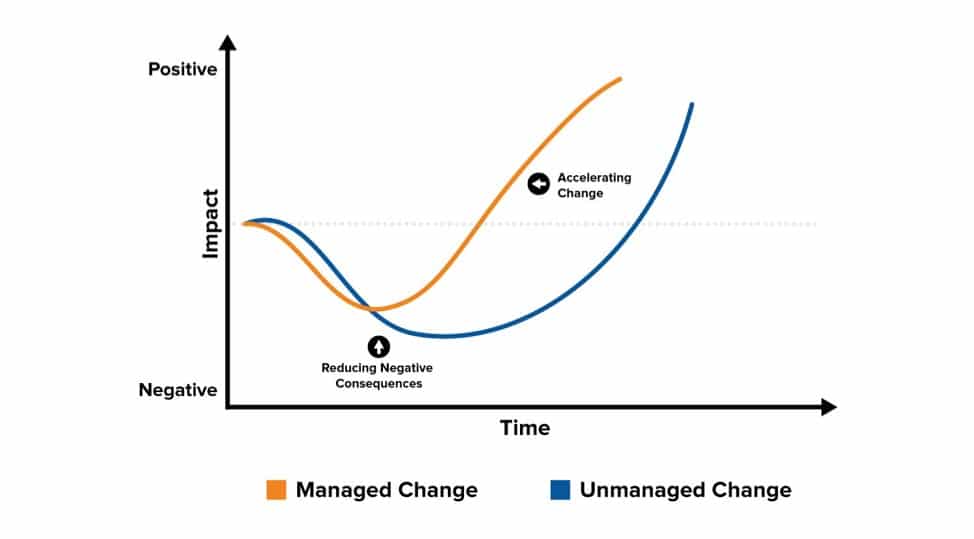Global outsourcing is now a well-established accounting industry trend. It’s a viable strategy for increasing capacity, margins and profits. However, like any new strategy, there’s a right way and a wrong way to go about it.
To help make your outsourcing journey faster and smoother, we’ve documented the 10 most common outsourcing mistakes we see firms make, and how to avoid them.
Mistake #1: Starting by outsourcing the most difficult work
When accountants hear about all the things they can outsource, they tend to get excited.
As a result, they may choose 2 or 3 really challenging tasks to test out the concept. Doing it this way makes it much harder than it needs to be.
Instead, we recommend starting with relatively standardised, process-driven and time consuming tasks that will liberate the most value. That way, you can gain some quick wins before building complexity.

Mistake #2: Not creating standardized workflows
When tasks are delegated in an ad hoc fashion, your offshore team members won’t know how to meet your expectations. And if 5 partners have 5 different ways of doing the same job, you’ll only create more confusion.
The solution is standardized workflows. Following a common structure lays down “train tracks” for your team to follow. It also provides a framework for continuous improvement.
The good news is that creating workflows isn’t hard. Check out this article on how to build awesome accounting firm processes.
Mistake #3: Not getting your local team onboard
It’s important to engage your local team in your outsourcing strategy right from the start. If your local team doesn’t understand where outsourcing fits in to your firm’s vision, you’re likely to flounder. By managing the change proactively, you can accelerate a successful outcome:

We’ve created a whole process around How To Engage Local Staff In Your Global Outsourcing Strategy, but here’s the summary:
- Empower your local team with your firm’s vision, and where outsourcing fits in.
- Have your team create a list of tasks they can delegate.
- Keep your team informed and give them ownership.
- Reassure them and show them their jobs aren’t at risk.
Once your local team understand the purpose and goals of your outsourcing strategy, they will engage with positivity.
Mistake #4: Not getting your clients onboard

Some accountants wonder how their clients will accept global outsourcing as a component of their business model.
But here’s the thing: all clients want is great outcomes for a fair price.
We currently provide over [toa_count target=”firms”]+ firms with offshore staff. Our experience has been that when firms explain how and why their offshore teams will add value to their clients, clients are very enthusiastic.
Check out this article What Will Clients Think Of Your Outsourcing Strategy? for more tips.
Mistake #5: Hiring only one outsourced team member

When many of our clients decide to open a second office at The Outsourced Accountant, they often hire 3, 5 or even 10 staff right from the start.
However, some decide to hire just one team member so they can “get their feet wet” and test out the concept.
What we’ve observed is, when firms hire more than one team member, their results tend to be better. Multiple team members allow some redundancy and specialization. It also means your offshore staff emerge with a stronger “team” identity. They can work together to build workflows faster (while also doing the work).
If budgets allow, we suggest a minimum starting team size of 2.
Mistake #6: Not taking the time to understand the culture and communication style

Most Western countries have a culture and communication style that is relatively direct and results-oriented. The Philippines has some cultural differences that are useful to understand and appreciate. For example:
- Filipinos aim to please. They may be unwilling to say “no” or admit they don’t understand. It is often useful to double check for understanding and emphasize that it’s OK to ask questions.
- Filipinos tend to be sensitive. They may take comments to heart, and may be particularly sensitive to criticism in front of other team mates. It’s better to address negative feedback one-on-one.
- Filipinos work best with clear KPIs. Numbers set expectations that they will strive to achieve and exceed.
- Filipinos are very social. They value interaction with other team members and in getting to know their colleagues on more than just a superficial basis.
- Filipinos value hierarchy. Seniority and titles are more important in the Philippines because they are markers of status.
Mistake #7: Not allowing time for constructive feedback

When you’re busy, it’s easy to move on to the next task before providing feedback on the last one. And it’s also easier to fix small mistakes yourself instead of asking them to be fixed – but only in the short term.
In the longer term, if you’re unable to fully and confidently delegate work, you fail to realise the full benefits of teamwork.
We recommend that each workflow includes a feedback step to allow good work to be praised and points for improvement to be highlighted. Improvement ideas should flow into workflow improvements and targeted training for the best results.
Mistake #8: Not establishing Metrics / KPIs

Metrics and KPIs are a precise way to set expectations and measure outcomes.
They also tend to work well in the Filipino work culture, where KPIs provide a clear answer to the question, “What represents good work?”
Some of the KPIs that our client use include:
- Productivity targets (e.g. do X of this type of job per day)
- Turnaround times
- Error / rework rates to minimise
- Number of system improvements made
Mistake #9: Not fully integrating your team members into your company

If you think of your Filipino team members as, “the offshore workers” rather than an integral part of your firm, you’ll end up with a sub-optimal culture and worse outcomes.
Firms who have fully integrated their Philippine office into their company enjoy tremendous results. Some practical ideas for achieving this include:
- Ensuring that team members in both offices know each others’ faces and names.
- Sharing and discussing your firm’s mission, vision, goals and values.
- Recognising important national holidays.
- Celebrating team members’ birthdays and other important dates.
- Finding out about your families and close social connections.
- Setting up a live video feed between offices.
- Sending key staff to visit each others’ offices.
The essence is to treat your firm like one company working from two offices, not two companies in two offices.
Mistake #10: Waiting too long to meet face to face

While the internet and collaboration tools enable work to be done anywhere, there’s no substitute for meeting face to face. We recommend new clients visit the Philippines to meet and spend some time with their team members as soon as possible.
Ideally, firms should aim to meet their team at least twice per year. It’s also very valuable to have your offshore team members visit your local office to meet and interact with your team.
Conclusion And Next Steps
Very often, success with outsourcing is as simple as avoiding mistakes. Every firm is bound to make a few. But our hope is that by knowing what to avoid, you’ll be able to enjoy even greater success.
At TOA Global, our local Account Managers take the time to understand your firm, your people and your goals so they can provide specific guidance to help you succeed.
If you’d like to find out more about how we can help grow your capacity, margins and profits, contact us to request a Free Outsourcing Strategy and Plan for your firm.



